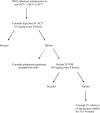Resistance of herpes simplex viruses to nucleoside analogues: mechanisms, prevalence, and management
- PMID: 21078929
- PMCID: PMC3028810
- DOI: 10.1128/AAC.00615-10
Resistance of herpes simplex viruses to nucleoside analogues: mechanisms, prevalence, and management
Abstract
Herpes simplex viruses (HSV) type 1 and type 2 are responsible for recurrent orolabial and genital infections. The standard therapy for the management of HSV infections includes acyclovir (ACV) and penciclovir (PCV) with their respective prodrugs valacyclovir and famciclovir. These compounds are phosphorylated by the viral thymidine kinase (TK) and then by cellular kinases. The triphosphate forms selectively inhibit the viral DNA polymerase (DNA pol) activity. Drug-resistant HSV isolates are frequently recovered from immunocompromised patients but rarely found in immunocompetent subjects. The gold standard phenotypic method for evaluating the susceptibility of HSV isolates to antiviral drugs is the plaque reduction assay. Plaque autoradiography allows the associated phenotype to be distinguished (TK-wild-type, TK-negative, TK-low-producer, or TK-altered viruses or mixtures of wild-type and mutant viruses). Genotypic characterization of drug-resistant isolates can reveal mutations located in the viral TK and/or in the DNA pol genes. Recombinant HSV mutants can be generated to analyze the contribution of each specific mutation with regard to the drug resistance phenotype. Most ACV-resistant mutants exhibit some reduction in their capacity to establish latency and to reactivate, as well as in their degree of neurovirulence in animal models of HSV infection. For instance, TK-negative HSV mutants establish latency with a lower efficiency than wild-type strains and reactivate poorly. DNA pol HSV mutants exhibit different degrees of attenuation of neurovirulence. The management of ACV- or PCV-resistant HSV infections includes the use of the pyrophosphate analogue foscarnet and the nucleotide analogue cidofovir. There is a need to develop new antiherpetic compounds with different mechanisms of action.
Figures



References
-
- About, I., J. Capdeville, P. Bernard, and P. Massip. 1994. Chronic herpes resistant to acyclovir in a patient with AIDS. Ann. Dermatol. Venereol. 121:810-813. - PubMed
-
- Agut, H., D. Boutolleau, C. Deback, P. Bonnafous, and A. Gautheret-Dejean. 2009. Testing the susceptibility of human herpesviruses to antivirals. Future Microbiol. 4:1111-1123. - PubMed
-
- Alvarez-McLeod, A., J. Havlik, and K. E. Drew. 1999. Foscarnet treatment of genital infection due to acyclovir-resistant herpes simplex virus type 2 in a pregnant patient with AIDS: case report. Clin. Infect. Dis. 29:937-938. - PubMed
-
- Andrei, G., et al. 2007. DNA polymerase mutations in drug-resistant herpes simplex virus mutants determine in vivo neurovirulence and drug-enzyme interactions. Antivir. Ther. 12:719-732. - PubMed
-
- Andrei, G., et al. 2000. Resistance of herpes simplex virus type 1 against different phosphonylmethoxyalkyl derivatives of purines and pyrimidines due to specific mutations in the viral DNA polymerase gene. J. Gen. Virol. 81:639-648. - PubMed
Publication types
MeSH terms
Substances
LinkOut - more resources
Full Text Sources
Other Literature Sources

